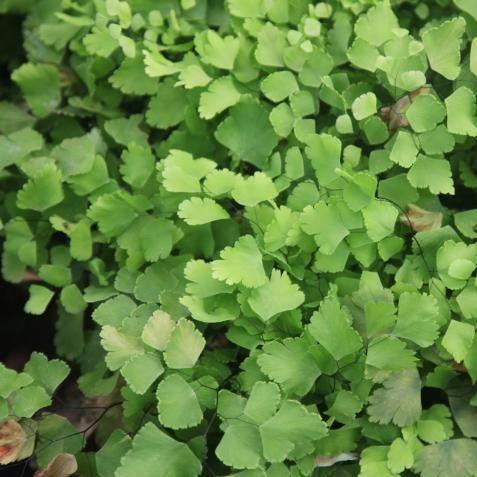- Common name:
- Dwarf Maiden Hair Fern
- Regional name:
- Marathi - Hansraj, Hindi - Hansraj, Gujarati - Hanspadi, Kannada - Pursha, Punjabi - Gunkiri, Sanskrit - Brahmadani, Tamil - Mayisikki.
- Category:
- Ferns, Indoor Plants, Groundcovers
- Family:
- Polypodiaceae or Fern family
-
Overview Maidenhair Fern (Adiantum spp.) is a delicate, graceful fern with feathery fronds and a unique, airy appearance. With over 200 species, it is widely cultivated for its beauty and versatility, making it an attractive addition to gardens, indoor spaces, and terrariums. This guide will cover information about the Maidenhair Fern, plantation, growing, care, and benefits.
Plant Information
- Scientific Name: Adiantum spp.
- Common Name: Maidenhair Fern
- Family: Pteridaceae
- Native Habitat: Tropical and temperate regions worldwide
- USDA Hardiness Zones: 3-11, depending on the species
- Light Requirements: Partial to full shade
- Soil Requirements: Well-draining, rich, and slightly acidic
- Water Requirements: Consistent moisture, but not waterlogged
- Growth Habit: Clumping, slowly spreading
- Foliage: Deciduous or evergreen, depending on the species
- Propagation: Spores or division
Plantation and Growing
-
Site Selection: Choose a location with partial to full shade and protection from strong winds, as the delicate fronds are easily damaged.
-
Soil Preparation: Amend the soil with organic matter, such as compost or peat moss, to create a well-draining, slightly acidic medium.
-
Planting: Space individual ferns about 18-24 inches apart to allow for proper air circulation and growth.
-
Watering: Keep the soil consistently moist but avoid over-watering, as this can lead to root rot.
-
Fertilizing: Apply a balanced, slow-release fertilizer in spring and summer, following the package instructions.
-
Mulching: Use organic mulch, such as bark chips or leaf mold, to help retain moisture and regulate soil temperature.
Care and Maintenance
-
Pruning: Remove dead or damaged fronds as needed to maintain a healthy appearance.
-
Pests and Diseases: Maidenhair Ferns are relatively pest and disease-resistant but may be affected by aphids, scale insects, or fungal diseases. Monitor the plant regularly and treat any issues promptly.
-
Winter Care: In colder climates, protect the fern by bringing it indoors or providing a thick layer of mulch for insulation.
Benefits
-
Air Purification: Maidenhair Ferns help improve indoor air quality by removing toxins and producing oxygen.
-
Aesthetic Appeal: Their delicate, lacy fronds add a touch of elegance and beauty to any space.
-
Humidity Regulation: These ferns help maintain healthy humidity levels in indoor spaces by releasing moisture through transpiration.
-
Low-Allergenic: Maidenhair Ferns are non-toxic and less likely to trigger allergies, making them a good choice for allergy sufferers.
-
Wildlife Habitat: In outdoor settings, these ferns provide shelter and nesting sites for small creatures, contributing to a healthy ecosystem.
Enjoy the graceful beauty of Maidenhair Ferns in your garden or indoor space with proper planting, care, and maintenance, while reaping the various benefits they provide.



